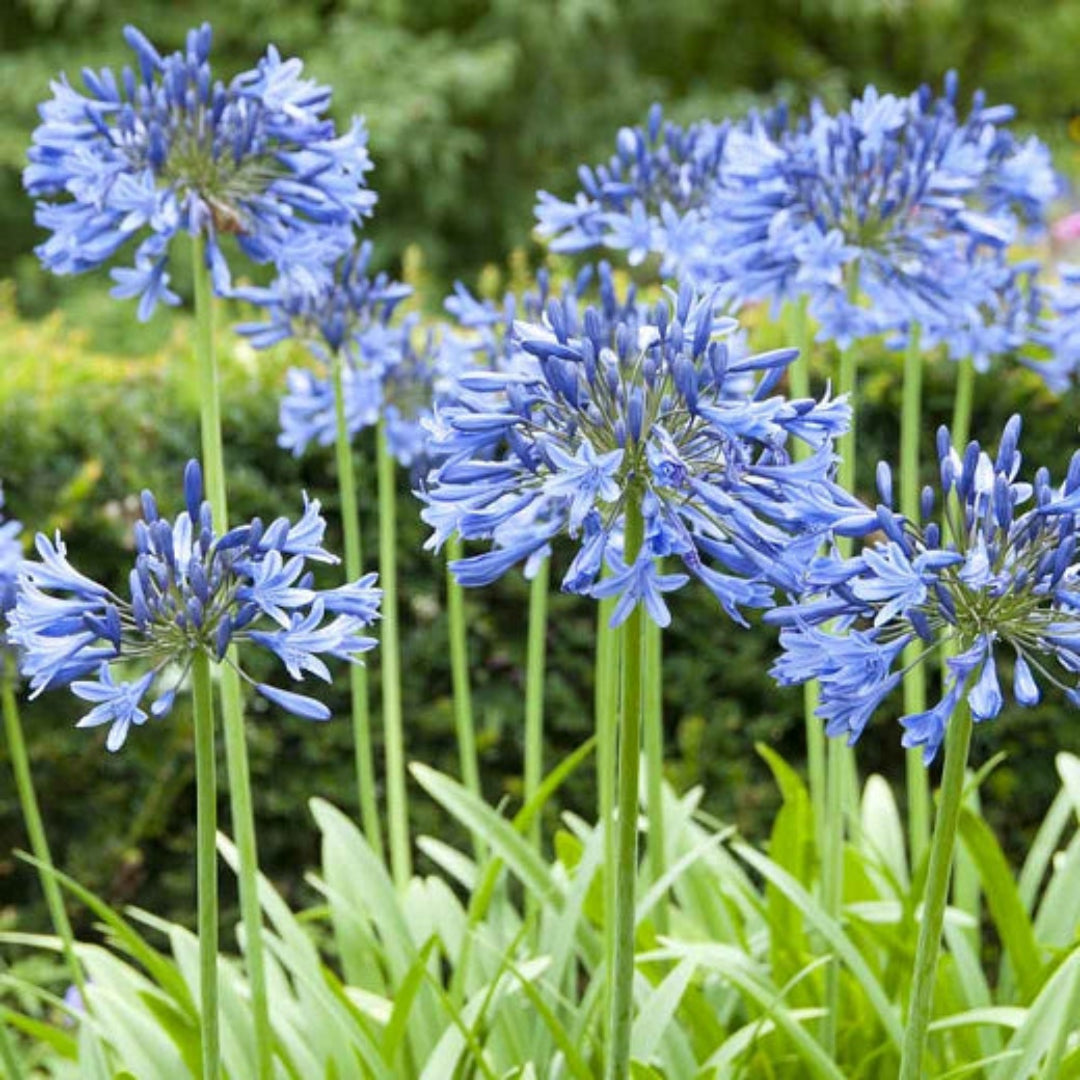Understanding the Art of Agapanthus Care: Important Actions for Healthy And Balanced Growth and Dynamic Blooms
In the world of cultivation, the growing of agapanthus stands as a gratifying undertaking for those that seek to nurture these classy flowering plants. With their striking blossoms and graceful foliage, agapanthus has captured the attention of garden enthusiasts worldwide. Nonetheless, attaining ideal growth and lively blossoms requires a nuanced strategy that encompasses numerous essential actions. From picking the right selection to grasping trimming strategies, the trip in the direction of cultivating flourishing agapanthus plants is multifaceted and holds the crucial to unlocking the complete capacity of these herb gems.

Picking the Right Agapanthus Variety

When selecting the right Agapanthus variety for your yard, consider variables such as environment viability, flower shade, and growth behavior. Furthermore, take into consideration the environment in your area to make certain the Agapanthus range you select can flourish in your certain conditions. Comprehending the growth routine of different Agapanthus ranges is important for proper placement within your yard.
Ideal Growing Problems
Considering the optimum environmental needs is crucial for successful Agapanthus growing. Agapanthus plants are sensitive to cool temperature levels and must be shielded from frost throughout winter months.
To guarantee healthy growth and dynamic blooms, plant Agapanthus bulbs at a depth of about 2-4 inches and area them 8-12 inches apart. Adding natural issue, such as garden compost, to the soil can enhance water drainage and fertility, promoting durable root development. Mulching around the base of the plants assists preserve wetness and suppresses weed development. Regular watering is essential, specifically during the expanding season, to keep the dirt consistently damp however not soaked.
Watering and Fertilizing Tips
Maintaining appropriate moisture degrees and giving important nutrients are key components in the treatment routine for Agapanthus plants. When it comes to watering Agapanthus, it is important to strike an equilibrium. These plants choose continually wet dirt yet are prone to root rot if overwatered.
Feeding Agapanthus is essential for advertising healthy and balanced growth and prolific flowers. Apply a balanced fertilizer, such as a 10-10-10 formula, in the early spring as brand-new growth emerges. By following these watering and feeding ideas, you can guarantee your Agapanthus plants thrive and create vivid, resilient blossoms.
Trimming Strategies for Agapanthus
Pruning Agapanthus plants at the appropriate times and with proper strategies is critical for preserving their health and promoting optimum growth and blooming. The ideal time to prune Agapanthus is in late winter or early springtime before brand-new growth emerges.
For flowered stems, wait till the blossoms have actually perished and after that trim them back to the base. This not only tidies up the plant's appearance but likewise encourages the growth of brand-new flower buds. Deadheading spent blossoms can additionally redirect the plant's power into generating more flowers as opposed to establishing seeds. Nonetheless, if you wish to gather seeds for propagation, leave some blossoms to fully grown and dry on the plant.
Keep in mind to utilize clean, sharp tools to make accurate cuts and lower the danger of presenting illness. Agapanthus. Normal trimming will assist maintain your Agapanthus looking neat view website and healthy while ensuring an abundant screen of stunning blossoms
Dealing With Typical Pests and Conditions
After guaranteeing appropriate pruning techniques for Agapanthus, it is essential to deal with usual parasites and conditions that can influence the wellness and vigor of these plants. Agapanthus plants are usually durable yet can still come down with particular concerns. One typical insect that influences Agapanthus is the Agapanthus gall midge. This small, orange fly lays its eggs in the vegetation, resulting in distorted development and blossom buds that stop working to open. To battle this parasite, prune and Homepage destroy any affected plant parts and think about making use of insecticidal soap.
Furthermore, Agapanthus plants can experience from root rot if they are grown in badly draining soil. By being attentive and taking timely activity versus diseases and parasites, you can help your Agapanthus plants flourish and produce dynamic flowers. Agapanthus.

Verdict
In final thought, understanding the art of agapanthus treatment involves choosing the best variety, supplying perfect growing conditions, correct watering and feeding, suitable trimming strategies, and addressing common pests and illness. By following these essential steps, you can make certain healthy development and dynamic flowers for your agapanthus plants. Keep in mind to on a regular basis monitor and maintain your plants to advertise their general health and longevity.
To ensure healthy and balanced growth and lively flowers, plant Agapanthus bulbs at a deepness of concerning 2-4 inches and space them 8-12 inches apart. By see post complying with these watering and feeding suggestions, you can guarantee your Agapanthus plants grow and produce vivid, long-lasting blossoms.
One usual insect that impacts Agapanthus is the Agapanthus gall midget. In addition, Agapanthus plants can experience from root rot if they are planted in badly draining soil. By following these important actions, you can ensure healthy growth and vibrant blooms for your agapanthus plants.